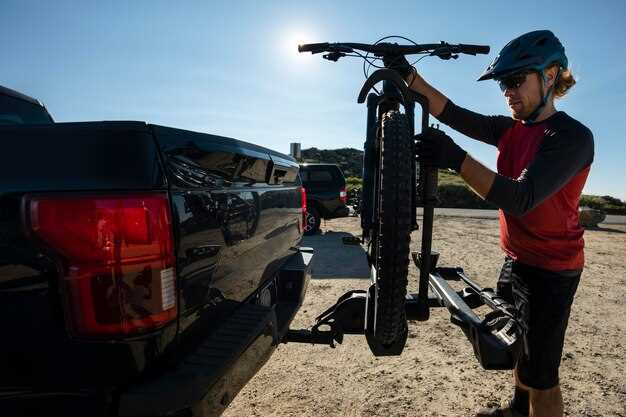
Towing a trailer can be a rewarding experience, offering the freedom to transport goods and recreational vehicles with ease. However, a proper setup begins with the installation of a reliable hitch. Ensuring that your hitch is correctly installed is crucial for both safety and efficiency during towing operations. This article will guide you through the steps necessary for a successful installation and highlight essential safety checks to perform afterward.
First and foremost, understanding the components of your towing system, including weight ratings and compatibility, is essential for a secure hitch setup. A well-chosen hitch not only enhances the towing capacity of your vehicle but also contributes significantly to road safety. By following the manufacturer’s instructions and using appropriate tools, you can achieve an effective setup that meets all necessary standards.
Once you have successfully installed the hitch, the next step involves crucial safety checks to ensure it functions properly. These checks are designed to identify any potential issues that could arise during towing, such as inadequate attachment, misalignment, or wear and tear. Taking the time to perform these inspections will provide peace of mind and help prevent accidents on the road, making your towing experience safe and enjoyable.
Selecting the Right Trailer Hitch for Your Vehicle
When it comes to towing, choosing the correct trailer hitch is essential for both safety and performance. The right setup ensures that your vehicle operates efficiently while towing and minimizes the risk of accidents or damage.
Determine Towing Capacity – First, consult your vehicle’s owner manual to find its towing capacity. This figure is crucial as it informs you of the maximum weight you can safely tow. Exceeding this limit can lead to significant mechanical issues and safety hazards.
Hitch Classes – Trailer hitches are categorized into classes based on their towing capacities. Class I hitches are suitable for lighter loads, while Class V hitches can handle the heaviest trailers. It’s vital to choose a hitch class that aligns with your vehicle’s capabilities and the weight of the trailer you intend to tow.
Compatibility – Ensure the hitch you select is compatible with your vehicle’s make and model. This includes considering the attachment points and any additional features required for a secure fit. Many manufacturers provide compatibility charts to simplify the selection process.
Type of Tow Bar – There are various types of tow bars available, including fixed, adjustable, and removable options. Fixed hitches are more robust, while removable hitches offer convenience when not in use. Choose a style that meets your towing frequency and preferences.
Gear and Accessories – Consider the additional accessories you’ll need for a complete towing setup, such as hitch balls, wiring harnesses, and stabilizer bars. These components are essential for creating a safe and efficient towing experience.
Safety Features – Look for hitches that include built-in safety features, such as weight distribution systems or sway control mechanisms. These elements enhance stability and control during towing, especially on uneven terrain.
By carefully considering these factors, you can select a trailer hitch that meets your towing needs, ensuring a safe and effective towing experience. Make sure to perform regular safety checks after installation to maintain optimal performance.
Step-by-Step Guide to Installing a Trailer Hitch

Installing a trailer hitch requires careful planning and execution to ensure safe towing capabilities. Follow this step-by-step guide for a successful setup.
Step 1: Gather Tools and Materials
Before starting, collect all necessary tools including a socket set, wrenches, and a torque wrench. You will also need a trailer hitch kit compatible with your vehicle model, which may include bolts and mounting hardware.
Step 2: Prepare Your Vehicle
Park your vehicle on a flat surface and engage the parking brake. For easier access, you may want to lift the rear of the vehicle using jack stands. Make sure the area is clean and free of debris where you will be working.
Step 3: Position the Trailer Hitch
Carefully align the trailer hitch with the designated mounting points under the vehicle. Most hitches fit between the frame rails, and you should consult the installation manual for specific mounting location details. Ensure the hitch is level and centered.
Step 4: Mark and Drill Holes (if necessary)
If your hitch requires additional drilling, carefully mark the locations for the holes. Use a drill and the correct size bit to create the necessary holes for the mounting hardware. Always check for any obstructions behind the mounting area to prevent damage to your vehicle.
Step 5: Secure the Trailer Hitch
Once the hitch is aligned, insert the bolts through the holes and tighten them using a socket set. Be sure to follow the torque specifications provided in the hitch installation manual to ensure everything is secured properly. If your hitch uses safety chains, attach them accordingly.
Step 6: Wire the Electrical Connections
If your trailer requires brake lights and turn signals, wire the electrical connector to your vehicle. This may involve connecting the wiring harness specific to your make and model. Confirm all connections are secure and weatherproof.
Step 7: Perform Safety Checks
After installation, perform a thorough safety check. Inspect all bolts for tightness, ensure wiring connections are correct, and verify the hitch is securely mounted. It’s also advisable to check the trailer brake lights and signals to ensure they function properly.
Step 8: Test Towing Capacity
Before embarking on any long trips, safely test your new towing setup with a light load. Make sure to start with low speeds and gradually increase to check stability and performance. Adjust driving habits based on the additional weight and handle the vehicle accordingly.
Following these steps will help you successfully install a trailer hitch, providing you with the necessary setup for safe and efficient towing.
Conducting Safety Checks Before Towing

Before hitting the road with your trailer, it’s essential to perform thorough safety checks on the hitch and the overall setup. Proper inspections help ensure a smooth and secure towing experience.
First, inspect the hitch itself. Make sure it is securely attached to the vehicle and that all bolts and connectors are tightened. Look for any signs of wear or damage, such as cracks or corrosion, which could compromise stability during towing.
Next, examine the trailer setup. Check that the trailer’s coupler is properly latched onto the hitch. It’s crucial to ensure that the safety pin or latch is in place to prevent accidental detachment while on the road.
Assess the electrical connections, particularly for the trailer’s lighting. Ensure that the brake lights, turn signals, and running lights are functioning correctly. This can help prevent accidents and enhance visibility for other drivers.
Just as important is checking the trailer’s tires. Verify that they are properly inflated and have sufficient tread. Inspect for any visible signs of damage, such as bulges or punctures, which could lead to tire failure while towing.
Lastly, perform a weight check of your setup. Ensure that the trailer’s load does not exceed the towing capacity of your vehicle, as exceeding limits can result in poor handling and increased stopping distances.
By routinely conducting these safety checks, you can enhance safety and reduce the risk of accidents, ensuring that your towing experience is secure and reliable.





